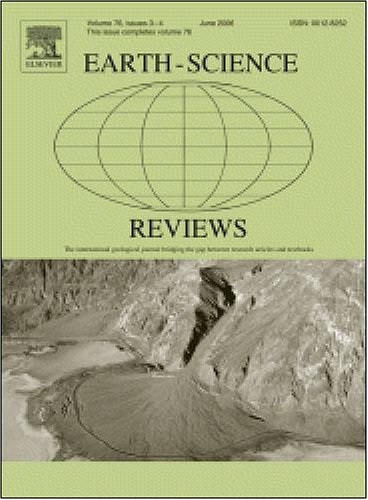Meso–Cenozoic exhumation history of Northeast Asia and its connections with tectonic and climatic factors
IF 10
1区 地球科学
Q1 GEOSCIENCES, MULTIDISCIPLINARY
引用次数: 0
Abstract
Northeast Asia, a prominent basin-and-range system during the Mesozoic–Cenozoic, provides a unique context for studying how deep Earth processes influence surface landscape evolution. However, the comprehensive exhumation history and its connections to tectonic and climatic factors remain poorly understood. In this study, we analyze spatiotemporal variations in exhumation rates across Northeast Asia by compiling and inverting a dataset of apatite and zircon fission track and (U-Th)/He ages, alongside crustal deformation and paleoclimate data. Our results reveal differential rapid exhumation from the Late Jurassic to Early Cretaceous (150–110 Ma), primarily driven by the closure of the Mongol–Okhotsk Ocean and subduction of the paleo-Pacific plates, further enhanced by increased precipitation. From 110 to 90 Ma, exhumation rates progressively decreased from the continental margin to the interior (∼0.69 km/Myr to ∼0.20 km/Myr), influenced mainly by compressional deformation. During the late Cretaceous to Paleocene (90–60 Ma), the Northeast Asian mountains underwent widespread rapid exhumation, with a peak rate of 0.85 km/Myr. However, toward the end of this period, exhumation slowed due to the diminished tectonic forces from paleo-Pacific plates subduction and arid climatic conditions. Cenozoic localized exhumation was driven primarily by mid-ocean ridge and Pacific Plate subduction, with minimal climatic influence. The present-day basin-and-range landscape of Northeast Asia is the cumulative outcome of tectonic and climatic forcing since the Mesozoic.
东北亚中新生代出土史及其与构造和气候因素的关系
东北亚是中新生代一个突出的盆地-山脉系统,为研究地球深部过程如何影响地表景观演化提供了独特的背景。然而,对其综合发掘历史及其与构造和气候因素的联系仍知之甚少。本研究通过编制和反演磷灰石和锆石裂变径迹和(U-Th)/He年龄数据,以及地壳变形和古气候数据,分析了东北亚地区出土率的时空变化。研究结果表明,晚侏罗世至早白垩世(150-110 Ma)的差异快速发掘主要受蒙古-鄂霍次克洋闭合和古太平洋板块俯冲的驱动,降水的增加进一步增强了这种差异。从110 ~ 90 Ma,从大陆边缘到内部(~ 0.69 km/Myr ~ ~ 0.20 km/Myr)掘出速率逐渐降低,主要受挤压变形的影响。在晚白垩世至古新世(90-60 Ma)期间,东北亚山脉经历了广泛而快速的发掘,最高发掘速率为0.85 km/Myr。然而,在这一时期末期,由于古太平洋板块俯冲和干旱气候条件造成的构造力减弱,挖掘工作放缓。新生代局部发掘主要受洋中脊和太平洋板块俯冲作用驱动,气候影响较小。东北亚现今的盆地山岭地貌是中生代以来构造和气候作用的累积结果。
本文章由计算机程序翻译,如有差异,请以英文原文为准。
求助全文
约1分钟内获得全文
求助全文
来源期刊

Earth-Science Reviews
地学-地球科学综合
CiteScore
21.70
自引率
5.80%
发文量
294
审稿时长
15.1 weeks
期刊介绍:
Covering a much wider field than the usual specialist journals, Earth Science Reviews publishes review articles dealing with all aspects of Earth Sciences, and is an important vehicle for allowing readers to see their particular interest related to the Earth Sciences as a whole.
 求助内容:
求助内容: 应助结果提醒方式:
应助结果提醒方式:


